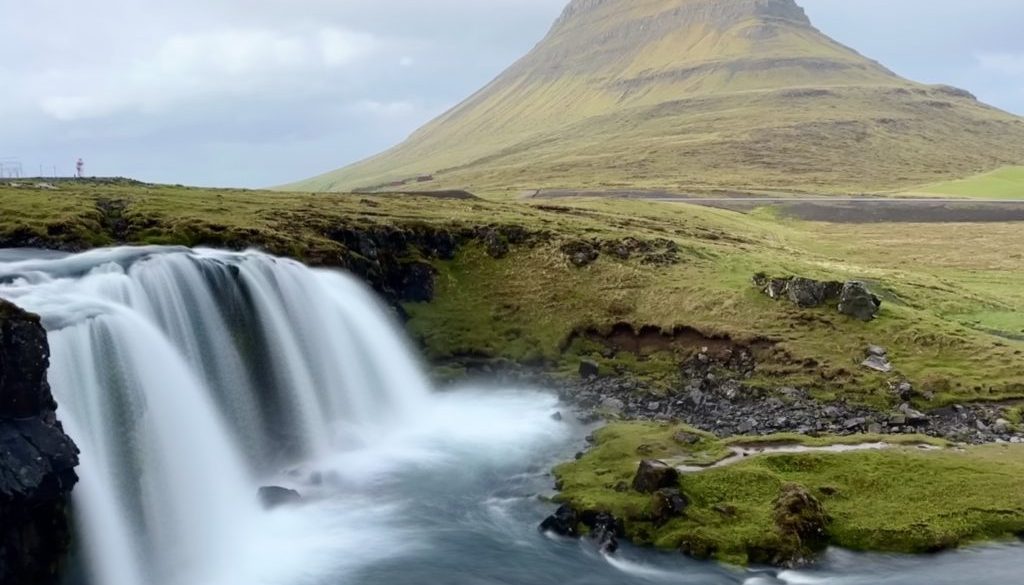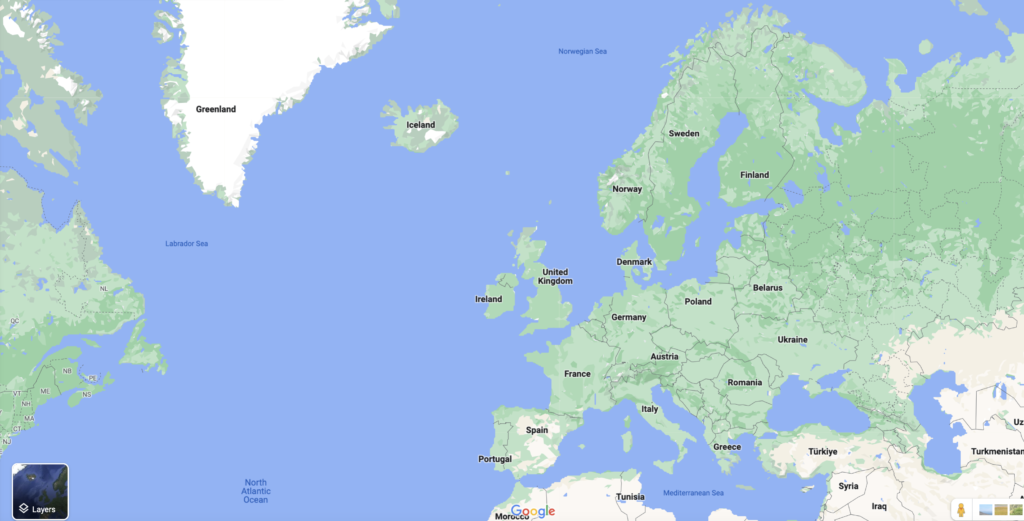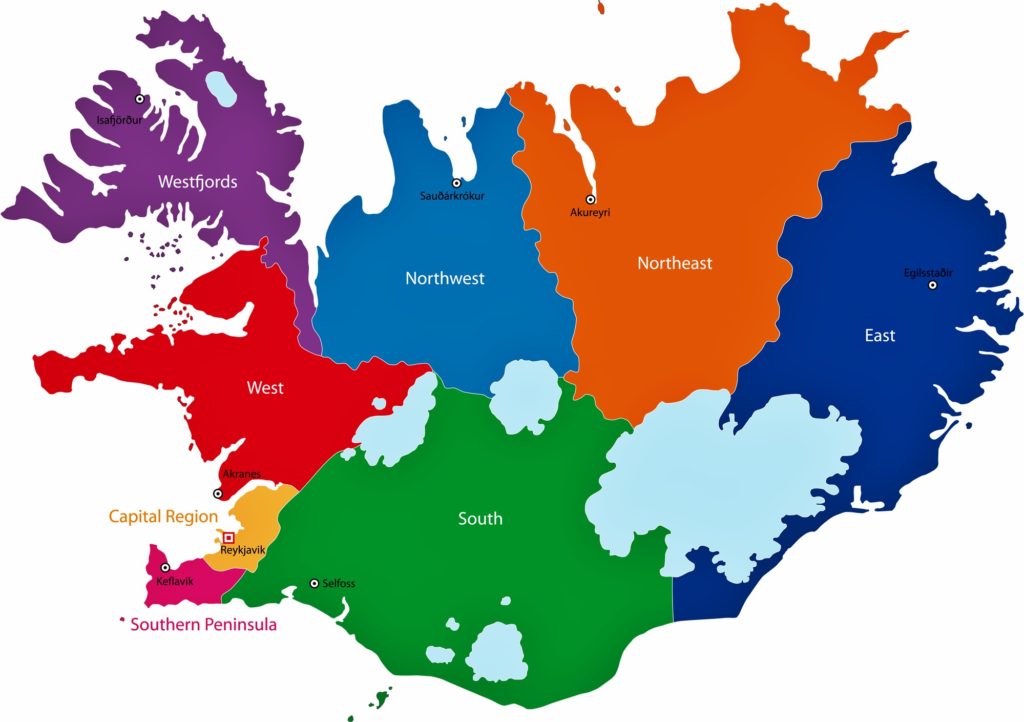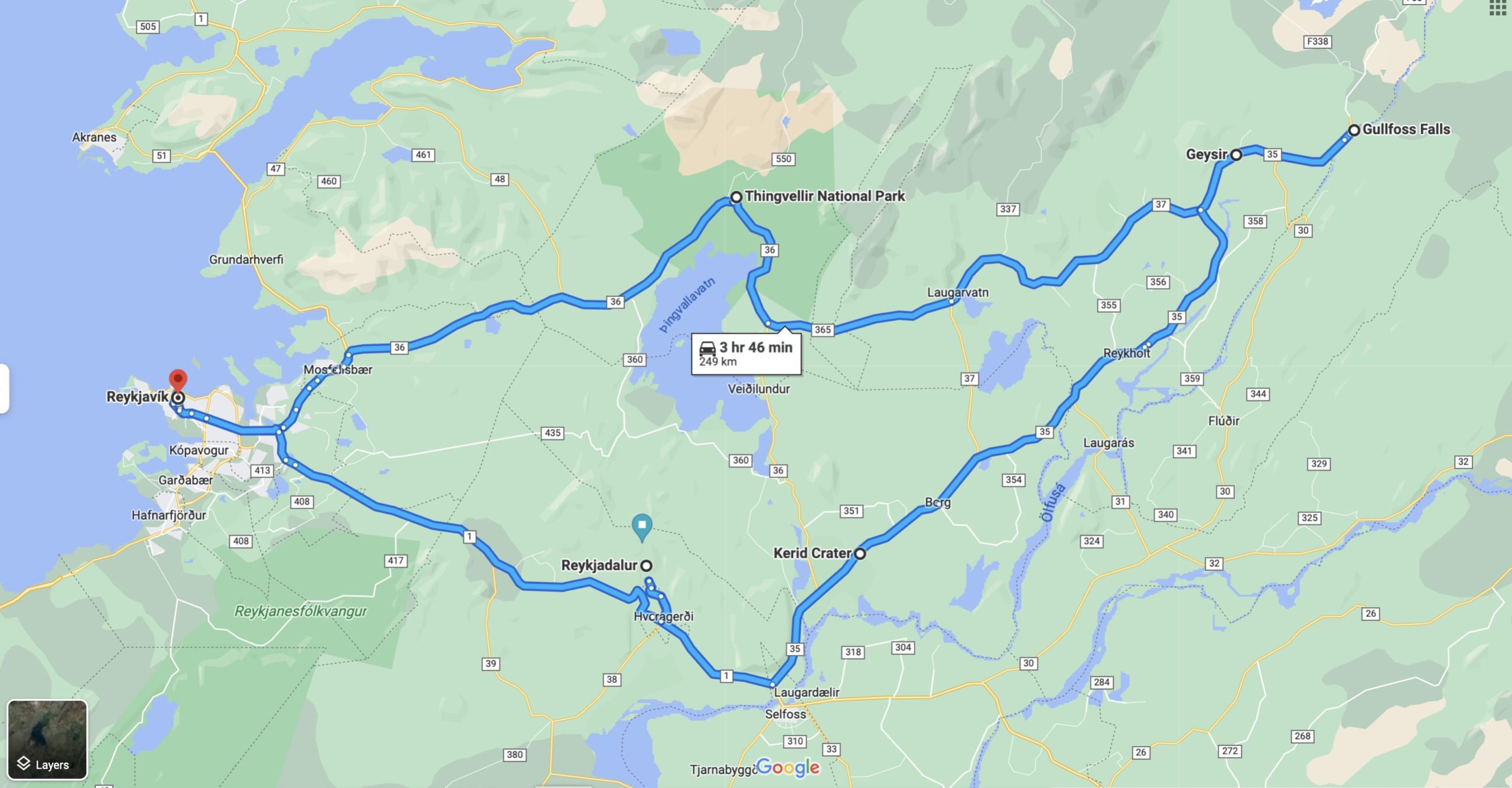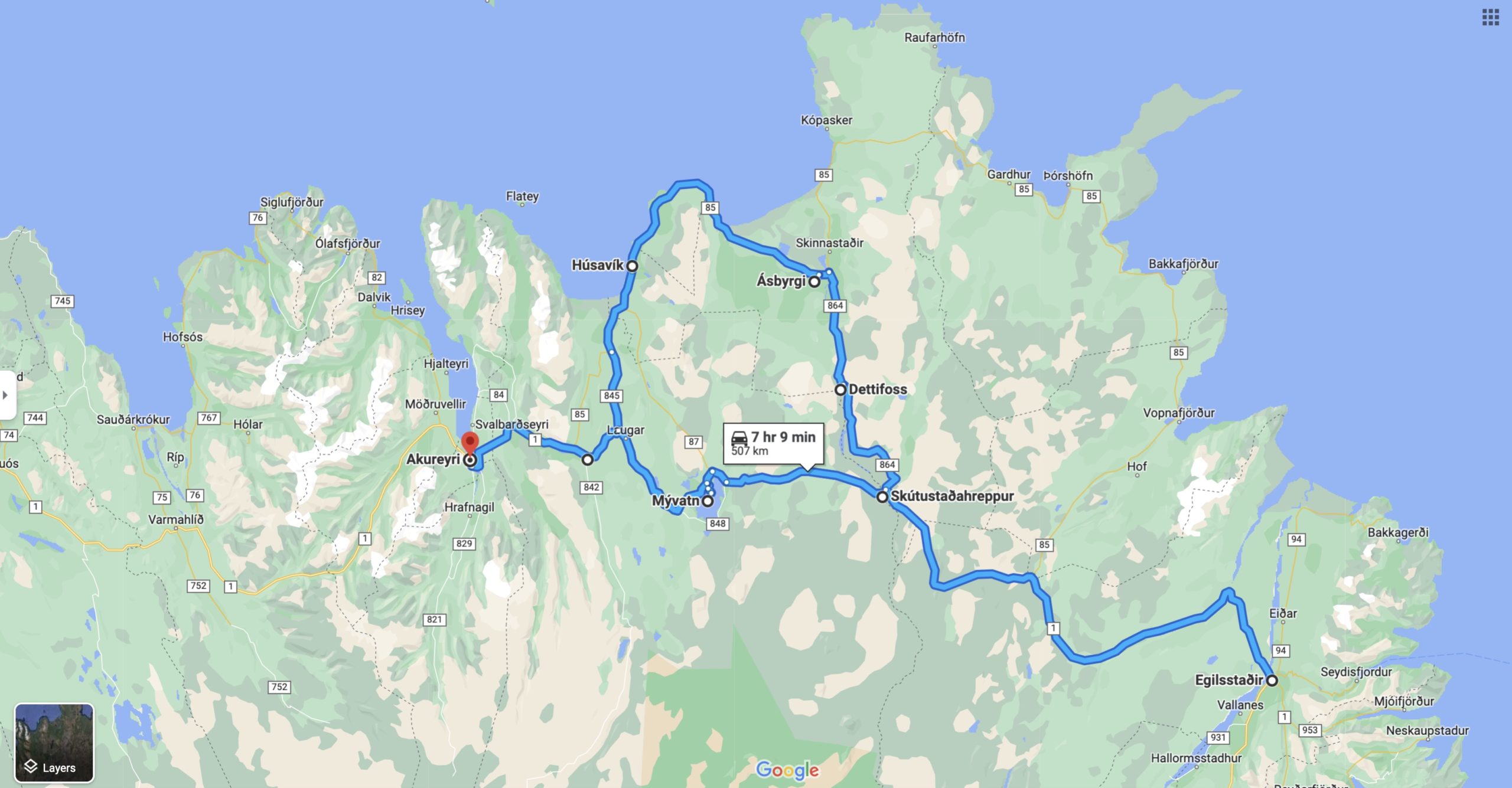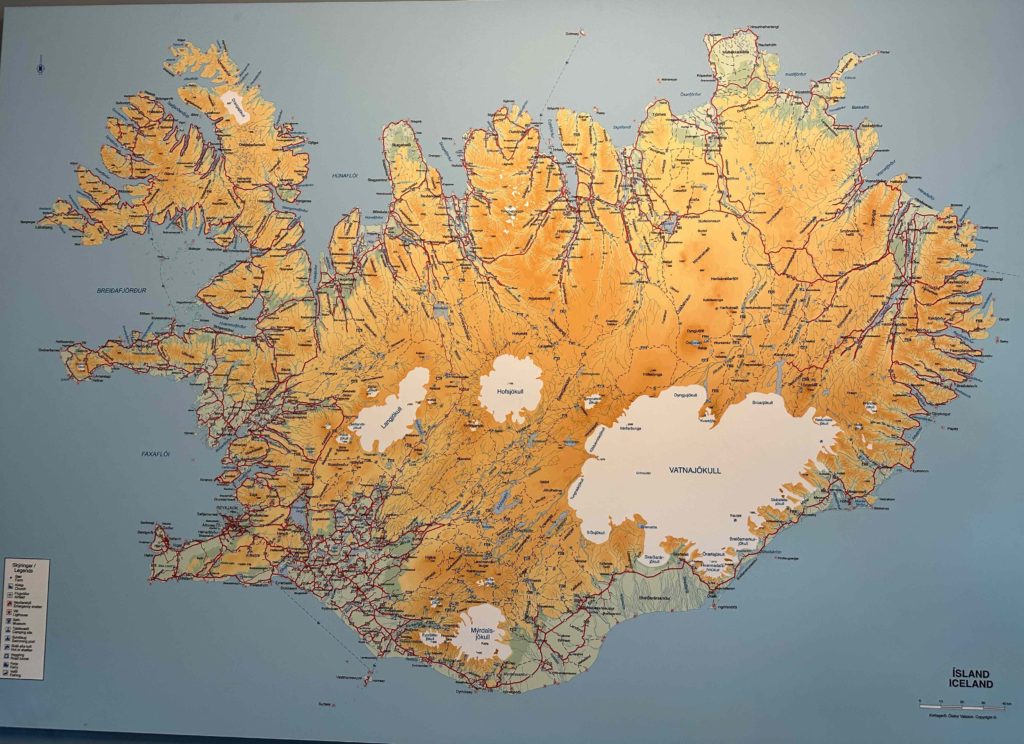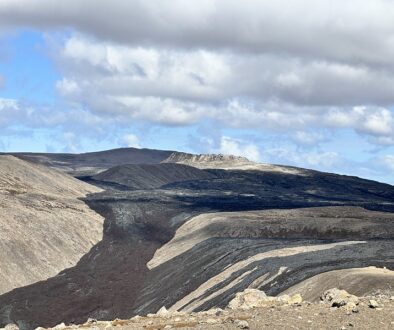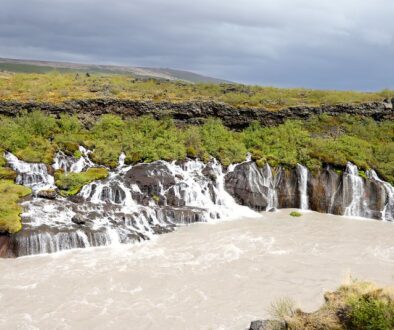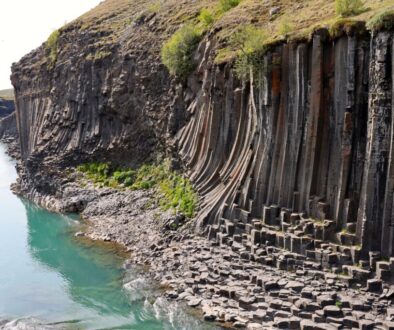Iceland Explore
Iceland, The Land of Fire and Ice.
Iceland has many volcanoes, glaciers, black sand beaches, waterfalls, craters and Ice caves, which attracts most of visitors and nature lovers. Iceland’s entire surface is made of volcanic rock, most of it basalt, the rock that forms when lava cools.
Nick name : The Land of Fire and Ice
Iceland got the nick name as “The Land of Fire and Ice” because of Volcanic and Glacier terrains that continue to form the Iceland’s nature.
Iceland sits on the two tectonic plates, North American and Eurasian. The west of Iceland sits on the North American plate (e.g. Reykjavik and Snaefellsnes Peninsula) and the east sits on the Eurasian plate. This means that Iceland is slowly being ripped apart by the forces of nature. It is pulled at a rate of about 2.5cm every year. This movement causes the volcanic eruptions and the gaps are filled by lava. Due to this Volcanic form of landscape Iceland is called the the land of fire.
Ice part of the name is because of the 269 Glaciers which cover about 11% of Iceland.
Mountaintop glaciers
In Iceland glaciers sit on top of the volcanoes. That’s the reason these are called Mountaintop glaciers. Examples of Mountaintop glaciers include the Eyjafjallajökull (1660 m) the location of the major 2010 eruption, and Mýrdalsjökull (1500 m) which sits on top of Iceland’s largest active volcano, Katla. These mountaintop glaciers are also one of the reason Iceland has so many incredible waterfall.
Iceland Geography
Iceland is a Nordic island country in the North Atlantic Ocean and in the Arctic Ocean.
what is Nordic island country? The Nordic Region (group of countries in northern Europe ) consists of Denmark, Norway, Sweden, Finland, Iceland, Faroe Islands, Greenland, and Åland. Basically Nordic is “The North”.
Island country or Island Nation is a country with primary territory consists of one or more islands or parts of islands. It is fully surrounded by water.
These countries main food source is either fish or imports.
Population: 380000
Size of the Island : 103,000 km²
Glaciers: 269 Glaciers, about 11% of land
Active Volcano: many..
Currency: Icelandic krona (ISK)
Official Language: Icelandic
Iceland Regions
- South
- East
- Northeast & Northwest
- West
- Westfjords
- Reykjavík Capital
- Southern peninsula
Pic courtesy: orangesmile.com
South
Southern part of Iceland is most accessible and most happening place all year. Plenty of things to do and see. Waterfalls, Geysirs, Glaciers, Beaches, Craters, Ice caves, Hot springs, National parks and many more.
Famous Þingvellir National Park and Vatnajökull National Park are in south part of Iceland. Famous Golden Circle route is also in south part with easy access.
Most famous sights to look for in south in Golden circle route are Þingvellir national park, Geysir, Gullfoss and Kerid crater.
Waterfalls that you can’t miss are Seljalandsfoss, Skógafoss, Kvernufoss and Svartifoss.
Many more unique sights like Dyrholaey, Reynisfjara Black Sand Beach, Skaftafelll, Jökulsárlón glacier lagoon, Diamond Beach, and Vestrarhorn. Each sight is different and a must visit.
If you are an explorer check out colorful mountains in Landmannalaugar.
South is the place where more Geo thermal activity happens and powers the Iceland.
South produces most vegetables in the country. With most of the agricultural products, milk, fish coming from this area, it is best to try Icelandic restaurant culture here. You should try Fresh fish of the day and South’s seafood specialty langoustine here.
https://www.south.is/
East
Egilsstaðir is the largest town in East. East has largest forest in the country. It is home for artists in summer. Sking and driving on snow is famous in winter.
Iceland’s biggest rhyolite formations directly accessible from an inhabited area around Borgarfjörður Eystri, while impressive magma chambers filled with colorful mineral deposits can be seen and visited along the eastern coast. East has a rich artistic history, as the landscape in the region is truly a rich palette. One of Iceland’s most beloved artists, the painter Jóhannes Sveinsson Kjarval, grew up in the town of Borgarfjörður eystri, where he created some of his most memorable work and where a museum now commemorates his life.
It is a landing place for the Smyril Line ferry from Europe. It has picturesque fishing villages at the coast.
https://www.east.is/en
Northeast & Northwest
We read about Golden circle above, now it is time for Diamond Circle. Diamond circle is about 250 km circuit which covers many water falls, canyons, and lakes. There are 5 key destinations in diamond circle.
- Goðafoss
- Lake Mývatn
- Dettifoss
- Ásbyrgi canyon
- Húsavík
It’s also a whale capital of Iceland with the deep blue seas. Whale watching is one of the most popular activity in North. There are also Geo thermal spas like Myvatn Nature Bath and Forest Lagoon on north.
Hvítserkur is another place where there is Rhino or an elephant structure to check out…
Experience the midnight sun in North in summer.
https://www.northiceland.is/
West
West is geologically diverse region in Iceland. It has waterfalls, volcanoes, flora and wildlife. This is the place where culture, history and nature compliment each other. This area consists of valleys, glaciers, fjords, craters, and volcanoes, with magnificent waterfalls, hot springs and caves to explore.
Visit the home of medieval writer Snorri Sturluson at Reykholt, and see the man-made geothermal bath in which he must have often allowed his mind to wander. Dive into the Krauma geothermal bath in water from Europe’s most powerful hot spring, Deildartunguhver.
Silver Circle is a less crowded route with beautiful waterfalls, historic sites and Geo thermal hot spring baths. Able to stop at baths fed by water from Europe’s most powering hot spring Deildartunguhver.
Few attractions along the silver route
- Deildartunguhver hot spring, the most powerful geothermal spring in Europe
- Krauma Spa
- Snorralaug hot spring
- Reykholt, historic town
- Hraunfossar waterfalls, water falls through lava
- Barnafoss waterfall
- Húsafell hot springs
- Vidgelmir lava tube
- Langjökull glacier
Maps: https://goo.gl/maps/L6wdeaEnFdHSPNpt9
- Grábrók Volcano Crater
Attractions on the route in the west
- Snæfellsnes National Park
- Snæfellsjökull Glacier
- Snæfellsnes Peninsula
- Búðir
- Búðarkirkja black church
- Arnarstapi
- Hellnar
- Gatklettur
- Lóndrangar
- Djúpalónssandur
- Kirkjufell Mountain
https://www.west.is/
Westfjords
Westfjords region, it is a place of picturesque fjords, towering cliffs, and incredible wildlife. Seems like only 10% of the Iceland visitors visit Westfjords. This is recognized as one of the best place to travel in 2022 by some travel magazine.
This is a paradise for backpackers.
https://www.westfjords.is/
Reykjavík Capital
Capital of Iceland. Everything is close by in Reykjavik. Museums, galleries, cafes, Harpa, city center and wharf area. Many restaurants and variety of cuisines. Try fresh sea food and lamb.
https://visitreykjavik.is/
Southern peninsula
Reykjanes peninsula is a geological wonder, where lighthouses outnumber villages. Besides the Keflavík International Airport, the spectacular Blue Lagoon, and the Fagradalsfjall volcano, the Reykjanes peninsula is a destination in its own.
Reykjanes Geopark is where the 2 tectonic plates from continents meet.
Once visitors come to Keflavík international airport, they will enjoy the time in Blue lagoon or the volcano hike or natural hot pools.
https://www.visitreykjanes.is/en
Ring Road
Ring Road is 1322km or ~821 miles long. Also known As Route 1 which circles the whole island. Recommended time driving the Ring Road is at least 7 days. Seem like some one drove it in one day but that means missing out on beautiful landscapes and photographic opportunities. Vast majority of the highway is paved and two-lanes. Very small portion is unpaved along the way. There are some one-lane bridges along the way. You can drive ring road on a compact family car, 4×4, Camper or any type of vehicle without problem. Most people like to use 4×4 or a Camper to be able to stop anywhere and rest, as well as reach destinations that some cars cannot.
https://goo.gl/maps/Ass4ZwRgWn4RJKRw8
Jewel Routes
Golden circle, Diamond circle and silver circle are called Jewel routes in Iceland.
- Golden Circle
- Located in southern Iceland that starts and ends in the capital, Reykjavik.
- Must visit : The Þingvellir National Park, Strokkur Geysir geothermal area, Gullfoss Waterfall
- Time permits & interest : Friðheimar’s Greenhouse and soup, Secret Lagoon, Volcanic Craters, Kerid crater lake and more..
- Golden circle is around 186 miles (300km) longand takes about 4 hours to drive.
- Visitors spend around 6 to 10 hours or even days and multiple days.
- Many tours available daily
- Can be visited all year
- Map: https://goo.gl/maps/dssJpbqpM6ZMTvEA6
- Diamond Circle
- Located in North Iceland
- Must visit: Dettifoss, Goðafoss, Mývatn
- Tiem permits & interest: Ásbyrgi, Húsavík
- Diamond circle is around 155-mile (250km) circuit .
- Map: https://goo.gl/maps/PcDywhpPFWPRKX7w6
- Silver Circle
- Located in West Iceland
- Must visit: Deildartunguhver hot springs, Reykholt, Hraunfossar water fall, Barnafoss water fall
- Time permits & interest : Húsafell hot springs
- Needs tours and advanced booking: Vidgelmir lava tube, and Langjökull Glacier
- Silver circle from Reykjavik is around 250 miles (400 km).
- Map: https://goo.gl/maps/L6wdeaEnFdHSPNpt9
Very nice article : https://www.icelandair.com/blog/diamond-circle-tourist-route/
Glaciers in Iceland
There are 269 glaciers in Iceland. Many of them are accessible in summer. You can take some Glacier hike tours.
Here are some of the Glaciers…
- Vatnajökull
- Largest and most voluminous ice cap in Iceland
- Second largest in area in Europe after the Severny Island ice cap of Novaya Zemlya
- Covering an area of 7,900 km²
- Located in south-east of the island
- Covers approximately 10% of the country.
- Langjökull
- Second largest ice cap in Iceland
- Located in west of the Icelandic interior or Highlands
- Its volume is 195 km³ and the ice is up to 580 m thick. The highest point of the ice cap is about 1,450 m above sea level.
- Mýrdalsjökull
- Mýrdalsjökull is an ice cap in the south of Iceland.
- Located north of the Vik
- Mýrdalsjökull is larger than Eyjafjallajökull
- This glacier holds one of the largest and most active volcanoes in the country, Katla
- Its peak reaches 1,493 m in height and in the year 1980 it covered an area of approximately 595 km².
- Snæfellsjökull
- 700,000-year-old glacier-capped strato volcano in western Iceland.
- Located in western most part of the Snæfellsnes peninsula.
- Sometimes it is seen from the Reykjavík over Faxa Bay, at a distance of 120 km.
- It is rapidly decreasing the size.
- Eyjafjallajökull
- Referred as E15 some times
- One of the smaller 100km-wide ice caps of Iceland
- Located in north of Skógar and west of Mýrdalsjökull.
- The ice cap covers the caldera of a volcano with a summit elevation of 1,651 metres
- Its waters are responsible for fueling the gorgeous Seljalandsfoss waterfall
- Sólheimajökull
- Located in southern Iceland, between the volcanoes Katla and Eyjafjallajökull.
- Part of the larger Mýrdalsjökull glacier
- Popular tourist location due to easy access from ring road
- Ice hiking and Ice climbing
- Drangajökull
- Northern most glacier of Iceland.
- Located in southwest of the peninsula Hornstrandir in the Westfjords region.
- Little tricky to reach this glacier
- Covers an area of 61.7 square miles and is the only glacier in Iceland that has not retreated in the recent past.
- Fláajökull
- A smaller, slow flowing glacier of Iceland
- Located east side of volcano Breiðabunga in the east of Iceland
- Fláajökull is a drainglacier of the large glacier Vatnajökull.
- Svínafellsjökull
- Most popular glacier tours on Vatnajökull.
- About four hours’ driving distance from Reykjavik.
- Located in the southeast of the island.
Volcanoes in Iceland
There are approximately 130 active and inactive volcanoes in Iceland. Westfjords is the only place where volcanoes are inactive and dormant. This is the oldest part of Iceland’s landmass.
Westfjords area formed around 16 million years ago and has been pushed away from the Mid-Atlantic Ridge. Thus, the Westfjords is the only part of the country that has to heat its water with electricity (rather than using geothermally-heated water).
There are 32 active volcanoes.
The main active volcanoes in Iceland run along a curved central line roughly from northeast to southwest. From north to south, the volcanoes’ names are Krafla, Askja, Laki-Fogrufjoll, Grimsvotn, Hekla, Vatnajokull, and Katla, followed by Heimaey and Surtsey on the Westman Islands. Grimsvotn is the most active volcano in Iceland.
- The West Volcanic Zone
- The East Volcanic Zone
- The North Volcanic Zone
- The Westman Islands
- The Snaefellsjokull Belt
- The Oraefajokull Belt
Reykjavik is situated along the East Volcanic Zone. There are several active volcanoes near Reykjavik, including the recently erupting volcano Fagradalsfjall. The Fagradalsfjall volcano is also the nearest active volcano to Reykjavik, about 18.6 miles (30 kilometers) southwest of the capital.
Top nine volcanoes
- Hverfjall/Hverfell: Easy Hike-Around Volcano
- Krafla: The Cold Crater Lake Volcano
- Askja: Iceland’s Hot Spring Volcano
- Snaefellsjokull Volcano: The Door to the Center of the Earth
- Katla Volcano: Eyjafjallajokull Volcano’s Explosive Neighbor
- Hekla Volcano: The Gateway to Hell
- Grimsvotn: Iceland’s Deadliest Volcano
- Thrihnukagigur: The Only Volcano You Can Enter
- Eyjafjallajokull: Iceland’s Most Famous Volcano
Most recent 5 volcano eruptions
- Fagradalsfjall volcano
- Eruption lasted until 24th of August 2022
- Eruption happened in 2021 and 2022
- Located in Reykjanes peninsula
- Bardarbunga
- Eruption happened in 2015
- Grimsvotn
- Eruption in 2011
- Eyjafjallajökull
- Eruption happened in 2010
- Hekla
- Eruption happened in 2000
Reference: https://volcano.si.edu/volcanolist_countries.cfm?country=Iceland
Weather and Climate
What is the weather look like and how is the climate? When is the best time to visit Iceland?
| Spring | Summer | Fall | Winter | |
| Months | April-May | June-August | September- November | December-March |
| Avg Temp | 1°C to 6°C | 6°C to 14°C | -1°C to 10°C | -2°C to 2°C |
| Comments | April to September – Best time for whale watching | 21 hours of sunlight. midnight Sun.
Best time of the year to travel and explore most of the areas. |
September and April provides guests with the once in a lifetime opportunity to seek the Northern Lights | November, February and March, you’ll have an opportunity to marvel at the ice caves of Vatnajökull
January – 5 hours sun light |
Depending on your interest you can pick the time of the year that you want to visit.
Our trip itinerary
Iceland was one of the destination that I wanted to visit because it’s nature. Black sand beaches, Volcanoes, Glaciers and water falls. After watching Game of Throne and Dilwale Bollywood song, the eagerness to go increased.
I had 8 days vacation to work with and 2 things we decided.
1. We want to go in summer.
2. We want to do ring road.
Here is our high level plan
Day 1 : Arrive in Keflavik, Iceland
Day 2 : Reykjavik to Vik
Day 3 : Vik to Hofn
Day 4 : Hofn to Akureyri
Day 5 : Akureyri to Hvammastangi
Day 6 : Hvammastangi to Reykjavik
Day 7 : Reykjavik
Day 8 : Reykjavik to Home
Things to know before you go…
1. What to Pack?
Passports,
layers of clothes,One fleece jacket, One water proof Jacket
Rain pants, rain jacket,
Hiking boots, sandals,
swim wear,
bug spray (Only for area near Dettifoss)
medicines,
Sun glasses, and nice camera
2. Mosquitoes, Bugs
There is one place where you might need bug protection. When you are walking to Dettifoss, there are more bugs.
3. Food
Lamb and sea food. We enjoyed and liked it.
Lot of Vegetarian options available as well.
Hot dog is 80% lamb and 20% beef and pork.
4. Do you need a car rental? Driving on our own?
Yes. Renting a care is highly recommended. This gives lot of flexibility in Summer and you can explore on your own.
5. Gas
When we rent a car, they will provide some discount on gas stations. For example., we rented care from Lotus car rentals and they had N1 gas stations with discounts.
Green pump is the Gasoline in Iceland. Compared to in US it is Diesel.
6. Paying for Gas
Gas stations take credit cards but need pin number. we ended up using debit card with pin. If you don’t have any card with pin, you might have to buy gas cards.
Request for pin nu,ber for credit card with sufficient time, as it takes 10 days to get the pin.
7. Hiking
Lot of hiking opportunities in Iceland along the ring road. prepare and give enough time.
8. Water proof shoes
It is recommended to use water proof good hiking shoes as there are many places where you can get wet and you also need good support.
With unpredictable rain, it will be good to have those shoes.
9. Cash withdrawal
I am a currency collector. I normally exchange some money in the airport whenever I go to some place. I did the same here. But didn’t get to use the additional currency any time ad credit card and Apple Pay is taken every where.
10. Pick pocketing, thefts and robberies
Iceland is the safest place. even for solo travelers. As usual like a responsible traveler, don’t put expensive things visible and attract people.
11. How do I get information?
Join few facebook groups like Iceland – Tips for travelers, Travel Iceland, Visit Iceland for helpful tips and information
12. What are the apps you need to download?
- SafeTravel
- Vedur
- Parka (For paying parking in many places.)
- Hiking in Iceland
- Iceland Guide
- MAPS.ME
13. Is there wifi connection along the ring road?
We took a wifi connection through the rental car. They gave a device and we are able to connect to wifi most of the time.
14. Is there celluar connection along the ring road?
Yes. except some places.
15. If I am traeling from US, do I need to take internaltional plan?
I highly recommend to take international plan atleast for one of the device in your group.
16. Finally is it safe to travel to Iceland?
Yes.
Travel time: June 2023
